Introduction
In this blog I would like to take a look at the state of modular smartphones in 2018 and philosophise about their necessity as well as some possible approaches to create a modular smartphone that makes sense. It should go without saying, that this blog reflects my own opinion (you have been warned). So without further a do, let’s dive into it!
The facts about modular smartphones
First of all I want to start with a very quick summary of the facts and the general state of modular smartphones as of 2018.
There are indeed very fascinating attempts of modular smartphones; there are concepts and ideas, but also physical phones, you could go and buy right now.
Some of the latter ones would be:
- LG G5 (launched back in 2016)
- Fairphone 1 and 2
- Motorola Z2
- Red Hydrogen
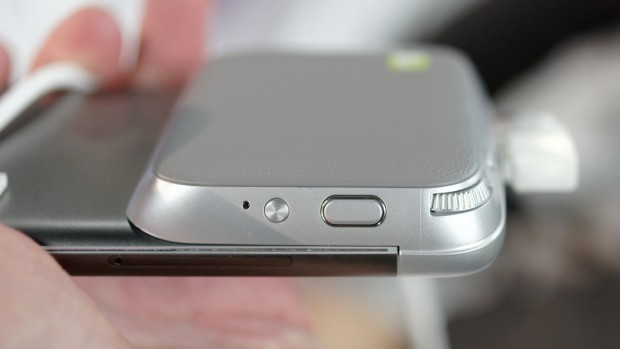
LG G5
Directly, we can discern an important fact: Most of these phones (and others, that I didn’t mention) are only for a small portion modular:
Yes, you can add stuff externally to your phone, for example using magnets, clamps and pins to transfer power and data, but, with the exception of the Fairphone, those things are purely external. You cannot swap vital elements, as we were kind of promised, like the built in display, cameras or even processor / System on a chip (SoC).
Hence, we can very safely conclude that we are still very far away from implementation of concepts such as Phonebloks or Project Ara (which, by the way, is based on phonebloks).
As a side note, I would like to mention, that Phonebloks has recently put out an interesting YouTube video, which I encourage to watch. On that note, another video I encourage to watch is the video by Techaltar on why modular phones have failed. He does a far better job explaining that than I do.
Why aren’t there real modular smartphones?
Let’s explore some reasons why modular smartphones don’t exist yet.

Project Ara
Bad for business model
First of all, it’s not easy to create such a device: There have to be providers, who will provide spare (or updated) parts, as well as provide support for it.
For companies, it is probably not very lucrative to sell for example an updated camera sensor (module) for a phone, when it would be far more lucrative to market and sell a completely new device.
Technical difficulties
But let’s hypothetically assume, that it wouldn’t hurt a company’s business model. Then there are actual technical difficulties of implementation:
- how do you connect the parts (modules) so that they can function in a reliable way?
- how do you integrate support for quick exchange of those hypothetical modules into the operating system? (driver support, data failsafe)
- how do you make that whole contraption durable and robust?
- how do you make it secure, from an IT standpoint?
And as such there are even more topics, that I cannot think of out the top of my head.
Consumers don’t want modular smartphones
As we know from humanity, technical difficulties cannot stop progress (think the moon landing). Of course technical difficulties designing a modular smartphone can be surpassed.
But then, one final question would remain: Who would want those?
It is not a secret, that it would be incredibly difficult to market modular phones to consumers, especially non-tech consumers:
They just want a phone, which looks nice and just works (although these points can be very much debated).
But how do you design a modular phone that looks nice? How do you market that?
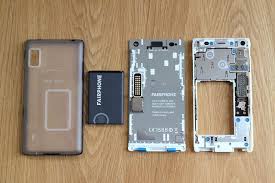
The Fairphone 2
Sure, you could convince people to swap out parts when they become deprecated or stop working. But who would go for that?
A person would need to know exactly what parts fit that phone and where to buy those. Most people own phones for 2 to 3 years anyway, and then get a new one, which also just looks and feels more modern (there is undoubtedly a psychological element to that). The chance that, inside those 2-3 years something might catastrophically break, besides the screen (and maybe the battery) is still quite small.
A phone suffers from wear and tear anyway, so why don’t replace the whole phone after max 4 years? A device that you carry in your pocket all day (in contrary to a desktop pc), will inevitably begin to scratch and stuff, buying a completely new smartphone may be even cheaper than replacing a modular smartphone completely, part by part.
Also, you cannot expect people to carry extra along with them for example a bulky camera module (as it is, I believe, the case with the LG G5). Consumers just want something, they don’t need to worry about.
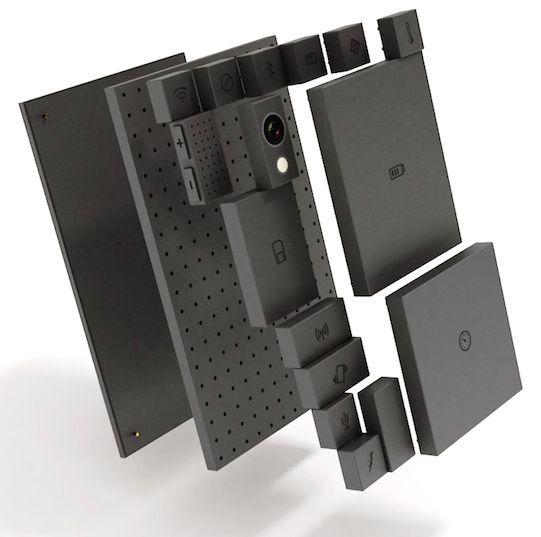
The Phonebloks concept
My opinion about modular smartphones and an alternative approach with ideas for the future
Alright, I have stated counterarguments to modular smartphones, but myself personally I am not against that idea. Far to the opposite: It is very important, that humanity finds out, how to build a modular smartphone that really makes sense.
Let me present a few ideas:
What if you could design a smartphone that actually looks nice but is very easy to disassemble. But disassembling I mean, that all of the components hide inside the body of the phone, but the phone can easily be taken apart with some instruments.
Those components can be off-the-shelve components, but they (with possible exceptions) should be easily removable with ordinary connectors, that are already used right now (for example those lego style connections).
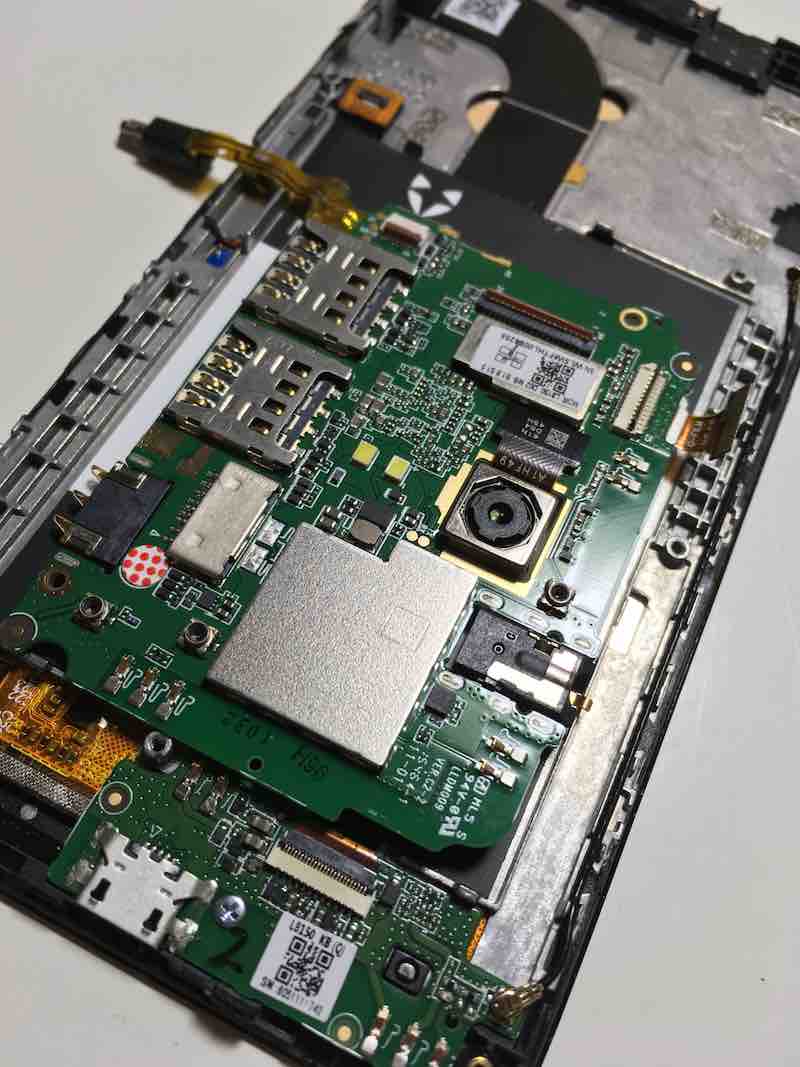
Wileyfox Swift disassembled
For example, some components are very easily replaceable in the Wileyfox swift, like for example the camera module. But this is just a specific example, as this phone is still build in a poor way, and some elements are still very hard to exchange (for example the screen).
Another example I had lying around is the Nokia Lumia 800. This phone is build like a tank, looks beautiful, but you can really easily get inside and change the screen for example.
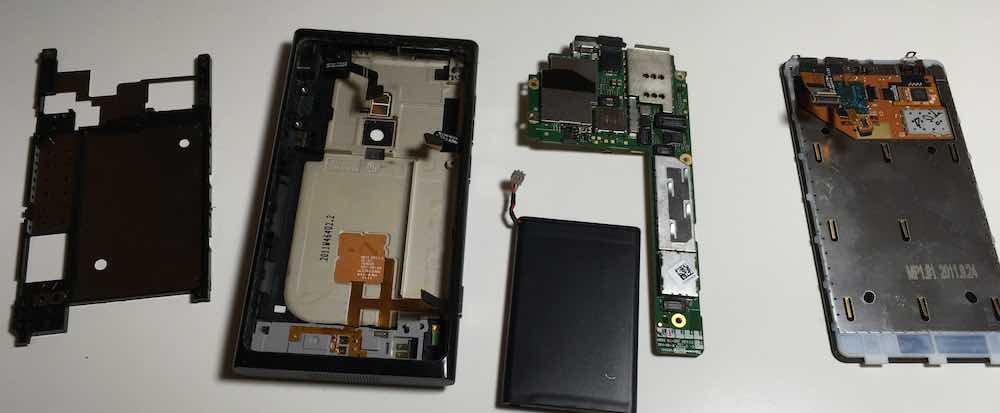
Nokia Lumia 800 disassembled
To sum up: These exchanges of parts should be doable for normal people, but people who don’t really want to deal with the technical hassle (like most people) could just bring their phone to a technician (whose jobs will also become easier » prices go down). On the other side, also a business opportunity (especially for small businesses).
These technicians could just install newer and updated components (and charge extra).
A modular phone with modules hanging from the outside will be notoriously difficult to manufacture and in the end, probably, won’t make sense for anyone.
Conclusion
To sum up, I am amazed by the idea of a modular smartphones, but those phones should be designed in a slightly different way. Phones should look beautiful, but also be durable and functional, and most importantly don’t get in one’s way. Technical people who want to change the components should be able to do that in an easy way, but the design of the phone shouldn’t force people to do so (it’s not like you have to change components every couple of hours).
Generally speaking, I am not the biggest fan of the trend of thinner phones, which are able to do less and less (there may be exceptions of course - I mean we don’t want to carry phones with VGA ports). I guess, a smartphone should look OK, but it shouldn’t be a fashion statement. A phone is, after all, a tool, which is supposed to make your life easier.
The (modular) smartphone of the future should be a true smartphone without compromises.